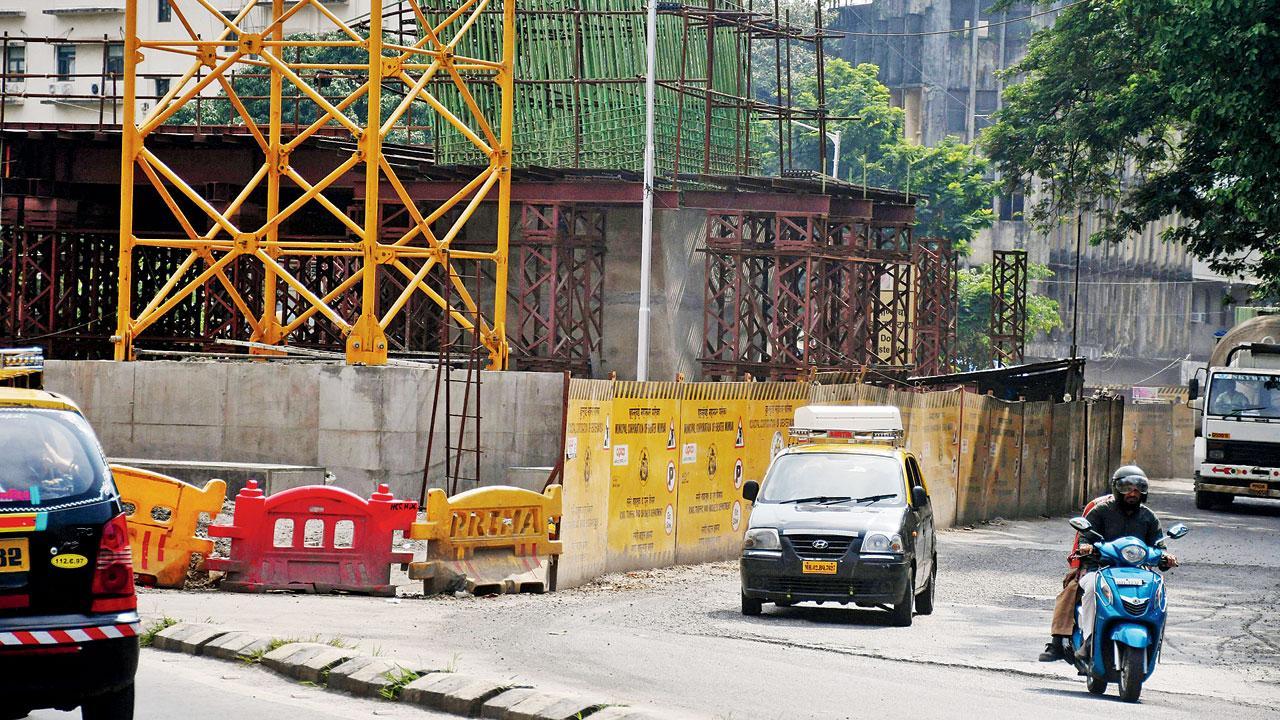The Mahalaxmi rail overbridge, constructed in 1920, is in a dilapidated condition

Work on the cable-stayed bridge is currently on, and will be completed by March 2024. Pic/Ashish Raje
It has happened before. And is quite likely to happen again. After spending several man hours and public money over planning the construction of two new bridges on the north and south part of the existing bridge at Mahalaxmi station, the BMC is now reconsidering the proposal. Officials said they are checking the feasibility of constructing the second bridge, owing to several hurdles. Several bridge projects in the city have been affected due to poor planning and bureaucratic inefficiency—the construction of the Himalaya bridge at CSMT being one among them.
ADVERTISEMENT
The Mahalaxmi rail overbridge, constructed in 1920, is in a dilapidated condition. Experts at IIT Bombay had recommended reducing the bridge’s load as it cannot withstand the weight of heavy vehicles. Simultaneously, work on construction of two new bridges at Mahalaxmi began in 2016.
Also read: Demolition of Carnac bridge begins; work likely to take 3 months, says CR
The BMC had planned two ROBs at Mahalaxmi station—one from Dr E Moses Road (Worli Naka) to Saat Rasta, and another from Saat Rasta to Keshavrao Khadye Marg (towards Haji Ali). Together, the bridges were supposed to ease traffic at the Saat Rasta junction and Mahalaxmi station. As per estimates, the bridge on E Moses Road would ply 2,500 vehicles per hour, while the bridge on Keshavrao Khade Road would carry 3,500 vehicles per hour. The BMC had planned both bridges on the cable-stayed network, and a work order worth Rs 745 crore was given in February 2020.
Even as construction of the cable-stayed bridge is ongoing—it is slated to be ready by March 2024—BMC is considering dropping the idea of building the second bridge on the north side of the existing bridge. “The new cable-stayed bridge and the existing bridge may be enough to carry vehicular traffic in the future. The construction of a conventional bridge at the north part has many challenges, including a megablock to put a girder over railway tracks,” said a senior official from the BMC.
The other challenge includes shifting underground utilities like water mains, sewer lines, storm water drains, BEST cables. “We will carry out a traffic simulation to assess the requirement of the said bridge and a decision will be taken after that,” said Satish Thosar, chief of the bridges department.
 Subscribe today by clicking the link and stay updated with the latest news!" Click here!
Subscribe today by clicking the link and stay updated with the latest news!" Click here!







